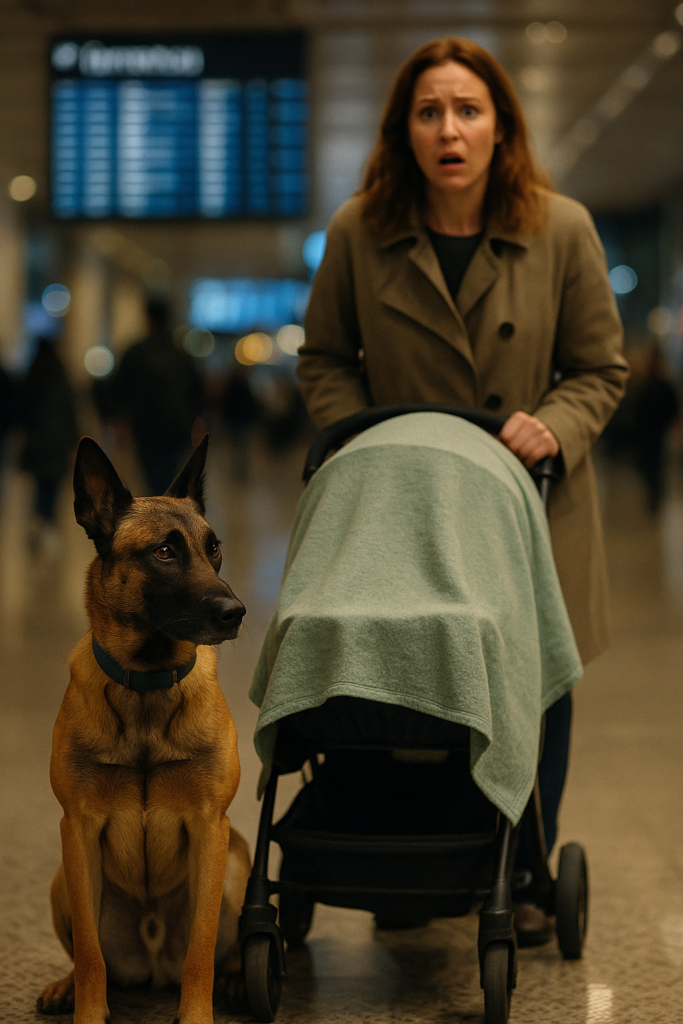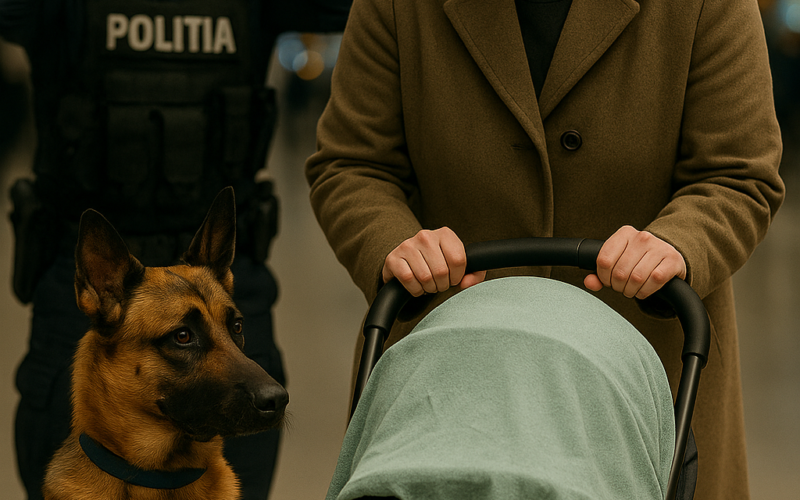It began like any other night. But ended as one of the most heroic moments in airport history.
Istanbul International Airport bustled with the usual tide of travelers, glowing panels, and muffled announcements. Officer Elian Radu, a seasoned Romanian border agent, walked steadily through Terminal B, accompanied by his loyal companion — Kira, a disciplined Belgian Malinois with three years of flawless service under her collar.
That evening, their mission wasn’t extraordinary. They were there to oversee the transfer of a high-profile diplomat under surveillance. Kira had performed dozens of such patrols before.
But something felt different that night. And Kira felt it first.
As they passed a woman pushing a stroller covered in a mint-green blanket, Kira halted. Her ears perked. Her body stiffened. And then she sat — a signal Elian had come to know too well. It was the sign she gave only when she sensed danger. Serious danger.
Elian’s instincts flared.
The woman looked startled, then frightened.
“Please! Don’t let the dog near the baby!” she cried.
But Kira didn’t move from her position.
Then, without a bark or snarl, she slowly approached the stroller and placed her paw on the frame. Elian stepped forward and gently lifted the blanket.

There was no baby inside.
Instead, there was a humanoid-looking device — a small robotic container with blinking sensors and a sealed metallic pod at its core. Strange antennas protruded from within, and a low humming sound echoed from its base.
Elian called in backup immediately. Within minutes, a specialized response unit arrived, isolating the area.
What they found shocked even the most experienced operatives.
The device contained a highly engineered viral compound — an experimental bio-agent stored in a pressurized micro-canister. It had no smell. No color. But if released mid-flight, it would have infected the entire cabin in under 90 seconds.
Even worse, the robot was programmed to activate in the air, timed precisely for the cruising altitude between Istanbul and London.
The woman? She was a decoy — a mule recruited online under the illusion of “helping transport a sleeping child for a couple.” She had been promised €1,000 and instructed to wheel the stroller from one terminal to another without stopping.
She never knew she was carrying a slow-moving catastrophe.
A Life-Saving Instinct
Kira’s detection didn’t just prevent a tragedy — it disrupted a global bioterror network. The device was traced to an illegal lab operating from East Asia, suspected of distributing weaponized samples via civilian transport routes.
In a televised press conference, Elian stood beside Kira and stated:
“That night, Kira wasn’t just a service dog.
She was the guardian of hundreds of lives — maybe thousands.”
A Legacy of Fur and Bravery
Photos of Kira flooded news networks. Social media dubbed her “The Angel of the Airport.” She was awarded the International Medal of Valor, and her alertness inspired the formation of a new elite unit trained to detect biological threats through canine instincts.

What began as a routine patrol became a moment the world would never forget.
Not all heroes wear badges.
Some walk on four legs… and listen to what the world cannot hear.
🔗 Share this story with someone who believes in the extraordinary bond between humans and animals.
🦴 #KiraTheHero #AirportSecurity #RealStories #CanineInstinct #UnsungHeroes #WordPressBlog
